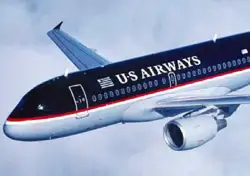
The American and US Airways boards approved a merger late Wednesday. The merger will create the world’s biggest airline, and the new carrier will operate under the American Airlines name.
Industry mavens wasted no time trying to scope out what will happen after the inevitable combination. We figure we can speculate with the best of them, so here’s our scenario:
Phase One: For the first six months to a year, nothing much will happen that will have any impact on passengers; that’s the amount of time required to go through the standard legalities and red tape. Government approvals may take longer than usual because foreign agencies as well as the U.S. government must sign off on the deal.
Phase Two: After the merger is wrapped up, the two airlines will continue to operate separately as they implement limited cooperative efforts in advance of operational combination. These initial adjustments will probably take at least six months—Southwest is still operating AirTran separately two years after its merger. To satisfy regulators, the combined carrier will have to adjust routes a bit to assure future competition, especially at the major hubs.
US Airways and American will probably have to give up some slots at capacity-limited JFK, LaGuardia, and Washington/Reagan National, and to make sure that new competitors will have access to gates and other facilities at Charlotte, Chicago, Dallas-Ft. Worth, and Philadelphia. Phase two will also see the beginnings of full reciprocity in frequent-flyer, lounge, and other passenger programs. The new mega-carrier will announce its plan for secession from U.S.Airways’ extensive code sharing with United and from the Star Alliance (this will include information on how current US Airways mileage holders might use their accumulated credit for Star Alliance awards).
Phase Three: Reality will set in when the two former separate airlines actually start to combine operations—a phase that could take anywhere from six months to three years. This is the phase that tests how capable the management really is at dealing with the following big problems:
- Labor: American’s main labor unions are solidly behind the merger, but who knows how long that support will last, especially when the airline starts downsizing, eliminating jobs, and trying to come up with combined seniority lists that please everybody.
- IT/reservations/customer-service integration: Getting the new huge airline onto a single computerized system will be a major barrier. It certainly was—and still is—a giant headache for United (and a headache United has passed on to its flyers).
- Corporate culture: Corporate differences have been cited as a problem in many airline mergers; expect some issues with that here, too.
Overall, Delta got through this phase relatively well with its Northwest merger. And United is still struggling with Continental. How this one will go remains to be seen.
Phase Four: The new airline will start to implement the anti-competitive moves about which consumer advocates worry. We could see an upward push in fares, a weakening of the frequent-flyer program, and such.
What’s your reaction to the merger? Share your thoughts in the comments.
We hand-pick everything we recommend and select items through testing and reviews. Some products are sent to us free of charge with no incentive to offer a favorable review. We offer our unbiased opinions and do not accept compensation to review products. All items are in stock and prices are accurate at the time of publication. If you buy something through our links, we may earn a commission.
Related
Top Fares From
Today's Top Travel Deals
Brought to you by ShermansTravel
Kenya: 14-Night Tour, Incl. Tanzania &...
smarTours
 vacation
$7125+
vacation
$7125+
7-Night Bermuda Cruise From Round-Trip Cruise...
Norwegian Cruise Line
 cruise
$1036+
cruise
$1036+
Ohio: Daily Car Rentals from Cincinnati
85OFF.com
 Car Rental
$19+
Car Rental
$19+



